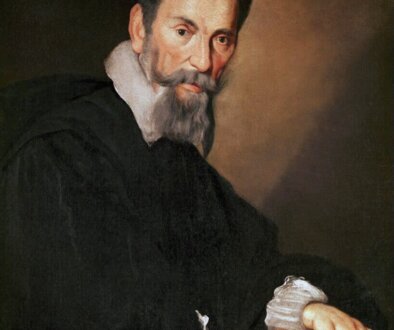Sergei Rachmaninoff 1 April [O.S.* 20 March] 1873 – 28 March 1943
Piano Concerto No. 2 in C minor Op. 18 – 2. Adagio Sostenuto
Symphony No. 2 in E minor Op. 27 – 3. Adagio
Piano Concerto No. 3 in D minor Op. 30
Rhapsody On A Theme Of Paganini Op. 43

By Kubey-Rembrandt Studios (Philadephia, Pennsylvania) – This image is available from the United States Library of Congress’s Prints and Photographs divisionunder the digital ID cph.3a40575.This tag does not indicate the copyright status of the attached work. A normal copyright tag is still required. See Commons:Licensing., Public Domain, https://commons.wikimedia.org/w/index.php?curid=37407922
Sergei Rachmaninoff was a Russian composer, pianist, and conductor, widely regarded as one of the greatest musicians of the late Romantic period. His music is known for its deep emotion, lyrical melodies, and rich harmonies, often reflecting Russian folk traditions and Orthodox church music.
Rachmaninoff was born into a noble family but faced financial struggles as a child. He showed exceptional musical talent from an early age and studied at the Moscow Conservatory, where he trained as both a pianist and composer. His early works, including Prelude in C-sharp minor, brought him fame, but his career suffered a setback when his First Symphony was poorly received. This failure led to a period of depression, but with the help of therapy, he regained confidence and went on to compose some of his greatest works.
Rachmaninoff’s music is beloved for its sweeping melodies and emotional depth. Some of his most famous pieces include:
- Piano Concerto No. 2 – One of the most popular piano concertos ever written, known for its romantic and powerful themes.
- Rhapsody on a Theme of Paganini – A set of variations for piano and orchestra, featuring the famous 18th variation, often used in films and TV.
- Symphony No. 2 – A lush and expressive symphony full of passion and longing.
His piano music, including his Études-Tableaux and Preludes, is known for its technical difficulty and beauty, making him a favourite among pianists.
After the Russian Revolution in 1917, Rachmaninoff left Russia and eventually settled in the United States. He focused more on performing than composing, becoming one of the most celebrated pianists of his time. His large hands and incredible technique allowed him to play challenging pieces with ease.
Despite his success, he always longed for his homeland, and this sense of nostalgia is reflected in his later works. His final major composition, Symphonic Dances, captures both his Russian roots and modern influences.
Today, Rachmaninoff’s music remains widely performed and loved for its emotional power and technical brilliance. His legacy as a composer and pianist continues to inspire musicians and audiences around the world. 🎶
*Old Style (O.S.) and New Style (N.S.) indicate dating systems before and after a calendar change, respectively. Usually, they refer to the change from the Julian calendar to the Gregorian calendar as enacted in various European countries between 1582 and 1923.


